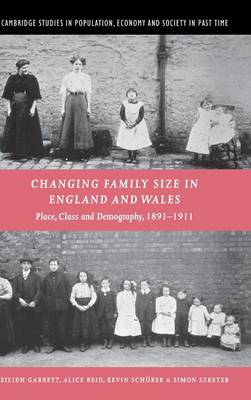Cambridge Studies in Population, Economy and Society in Past Time
2 total works
Changing Family Size in England and Wales
by Eilidh Garrett, Alice Reid, Kevin Schurer, and Simon Szreter
Published 1 January 2001
This volume is an important study in demographic history. It draws on the individual returns from the 1891, 1901 and 1911 censuses of England and Wales, to which Garrett, Reid, Schürer and Szreter were permitted access ahead of scheduled release dates. Using the responses of the inhabitants of thirteen communities to the special questions included in the 1911 'fertility' census, they consider the interactions between the social, economic and physical environments in which people lived and their family-building experience and behaviour. Techniques and approaches based in demography, history and geography enable the authors to re-examine the declines in infant mortality and marital fertility which occurred at the turn of the twentieth century. Comparisons are drawn within and between white-collar, agricultural and industrial communities, and the analyses, conducted at both local and national level, lead to conclusions which challenge both contemporary and current orthodoxies.
This book offers an original interpretation of the history of falling fertilities in Britain between 1860 and 1940. It integrates the approaches of the social sciences and of demographic, feminist, and labour history with intellectual, social, and political history. It exposes the conceptual and statistical inadequacies of the orthodox picture of a national, unitary class-differential fertility decline, and presents an entirely new analysis of the famous 1911 fertility census of England and Wales. Surprising and important findings emerge concerning the principal methods of birth control: births were spaced from early on in marriage; and sexual abstinence by married couples was a far more significant practice than previously imagined. The author presents a new general approach to the study of fertility change, raising central issues concerning the relationship between history and social science.

